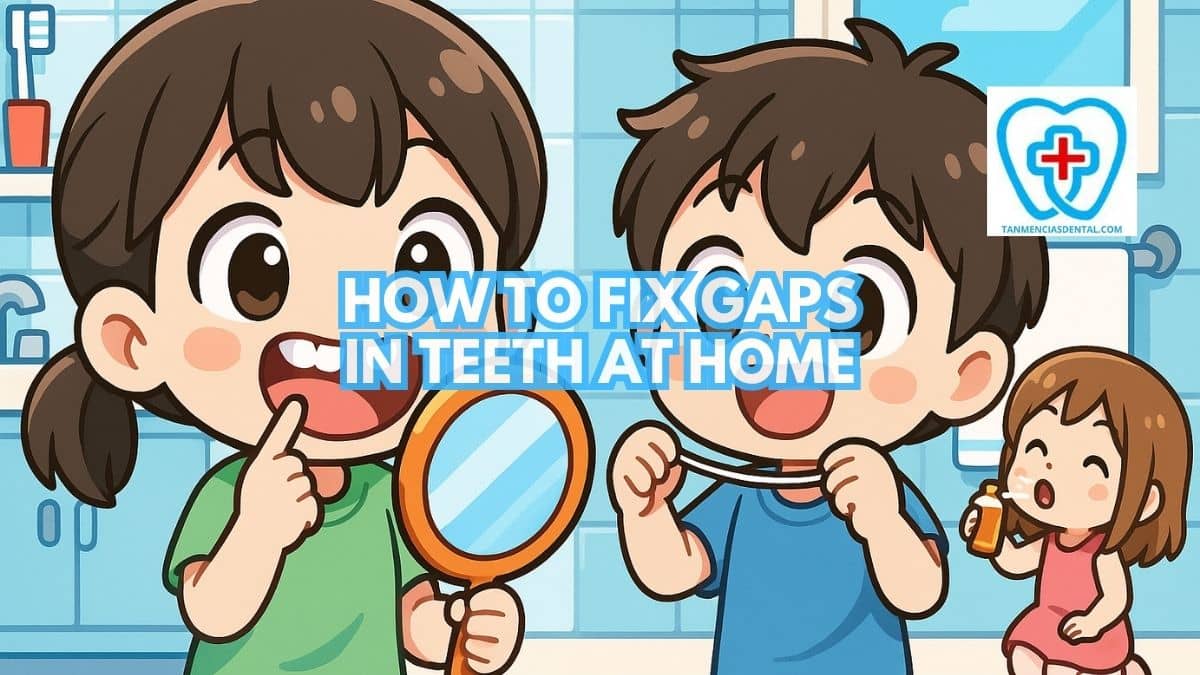Many people want to fix gaps in their teeth at home because it seems easier and cheaper.
They may feel embarrassed about the appearance of their teeth or want a simple solution.
It’s important to understand that not every at-home method is safe.
Before trying anything, it’s best to learn about what works and what doesn’t.
We’ll explain the options and risks of fixing gaps at home.
1. Causes Of Gaps Between Teeth
Gaps between teeth, also known as diastema, can have multiple causes.
Some people have small teeth or a large jaw, which creates space.
Others may have missing teeth, leading to gaps.
Habits like thumb-sucking or tongue-thrusting can push teeth apart.
Knowing the cause helps you choose the best way to address a gap.
🦷 How to Fix Gaps in Your Teeth With Veneers, Bonding, or Aligners
2. Common At-home Gap-fixing Methods
Some people try DIY methods to close small gaps, like using dental bands, aligners, or bonding kits.
They may also push on their teeth or try certain exercises.
While these ideas seem simple, they can cause problems.
Dental bands can move teeth too quickly and damage roots.
Always check if a method is safe before you try it.
🦷 How Does Wisdom Teeth Pain in the Ear Occur and What Are the Signs?
3. Benefits Of Oil Pulling For Oral Health
Oil pulling is an old practice where you swish oil in your mouth.
It can help remove bacteria and improve gum health.
While oil pulling won’t close gaps, it can keep your mouth cleaner and your gums healthier.
It may reduce bad breath and support overall dental care.
Oil pulling is safe to try, but it is not a fix for gaps.
🦷 Do You Brush Your Teeth Before Whitening Strips?
4. Teeth And Tongue Exercises For Minor Gaps
Some believe that pushing your tongue against your teeth can help close small gaps over time.
This might work for tiny gaps, but the changes are slow and limited.
It takes a lot of time and daily practice to see results.
These exercises will not help with big gaps.
They can support healthy habits, but should not replace professional care.
🦷 Why Do Wisdom Teeth That Grow Sideways Cause So Much Discomfort?
5. Risks And Use Of Dental Bands Or Elastics
Dental bands are small rubber rings that some people use to pull teeth together.
While they seem like a simple tool, they can damage teeth by moving them too fast.
This pressure can harm the roots and gums, leading to pain or even tooth loss.
Dentists strongly warn against using these without supervision.
Always talk to a professional before trying dental bands.
🦷 When Do Wisdom Teeth Grow? Why Do Wisdom Teeth Grow at Different Times for Everyone?
6. Cosmetic Fixes Like Dental Bonding
Dental bonding is when a dentist uses a resin to fill in gaps and shape teeth.
Some at-home kits claim to offer bonding, but they are not the same as professional care.
DIY bonding often leads to uneven results and weak spots.
Applying resin needs careful skill, and doing it wrong can damage your teeth.
Seeing a dentist for bonding is a safer and better option.
🦷 How to Fix Front Teeth Gap Without Braces
7. Limitations Of Home Remedies Vs. Professional Care
Home remedies can help with very small gaps, but have limits.
Dentists have tools and materials that make treatment more precise and long-lasting.
Large gaps, especially, often need braces, bonding, or veneers.
Trying to fix big gaps at home can cause more harm than good.
It’s important to know when to get professional help.
🦷 What Happens When You Don’t Brush Your Teeth With Braces?
8. Importance Of Oral Hygiene And Diet
Brushing and flossing help keep your teeth and gums healthy.
A good diet with vitamins and minerals makes teeth stronger.
These habits don’t close gaps but prevent other problems like decay or gum disease.
Clean teeth are less likely to shift in bad ways.
A healthy mouth is the best starting point for any dental work.
🦷 How Does a Teeth-Whitening Light Work to Brighten Your Smile?
9. Dangers Of DIY Treatments Without a Dentist’s Advice
Trying to fix gaps at home without a dentist can be risky.
You might move teeth in the wrong direction and cause pain.
Some at-home products can make teeth sensitive or lead to infections.
It’s easy to make mistakes that harm your gums or tooth roots.
Always ask a dentist before starting any treatment at home.
🦷 How to Fill Gaps in Teeth: A Complete Guide to Your Treatment Options
10. Realistic Expectations For Fixing Gaps Safely At Home
Small gaps may close slightly with time, but bigger gaps usually need a dentist’s help.
At-home methods can sometimes support dental health, but don’t provide a full solution.
Patience is important when trying minor fixes.
It’s good to understand what results you can expect and when to seek help.
Professional care is often needed for lasting results.
🦷 Highly Recommended Dental Clinic Marikina
👨⚕️ Conclusion
Fixing gaps in teeth at home is possible for small gaps, but not always safe or effective.
Home methods may help with minor issues, but won’t fully replace dentist care.
Trying unsafe treatments can cause long-term damage.
A dentist can guide you to the safest options for your smile.
Always balance the risks and benefits before trying to fix gaps at home.
😊 Self-Promotion
Visit Tan-Mencias Dental Clinic at 44 G. Del Pilar Street, Parang, Marikina City for your dental care needs.
We are here to help with any questions or concerns you have about your teeth.
You can send us a message on our Facebook page, use the contact form on our website, or call us at 0917-145-1074.
Our friendly team is happy to assist you with appointments or advice.
We look forward to helping you keep your smile healthy and bright!

